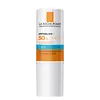What's inside
What's inside
 Key Ingredients
Key Ingredients

 Benefits
Benefits

 Concerns
Concerns

 Ingredients Side-by-side
Ingredients Side-by-side

Butyl Methoxydibenzoylmethane 3%
UV AbsorberHomosalate 10%
Skin ConditioningEthylhexyl Salicylate 5%
UV AbsorberOctocrylene 7%
UV AbsorberWater
Skin ConditioningStyrene/Acrylates Copolymer
Dimethicone
EmollientPolymethylsilsesquioxane
Butyloctyl Salicylate
Skin ConditioningGlycerin
HumectantAlcohol Denat.
AntimicrobialPoly C10-30 Alkyl Acrylate
Emulsion StabilisingCaprylyl Methicone
Skin ConditioningTrisiloxane
Skin ConditioningAcrylates/Dimethicone Copolymer
Skin ConditioningDiethylhexyl Syringylidenemalonate
Skin ProtectingPEG-100 Stearate
Glyceryl Stearate
EmollientPhenoxyethanol
PreservativePotassium Cetyl Phosphate
EmulsifyingPropylene Glycol
HumectantCaprylyl Glycol
EmollientPEG-8 Laurate
EmulsifyingAcrylates/C10-30 Alkyl Acrylate Crosspolymer
Emulsion StabilisingTriethanolamine
BufferingTocopherol
AntioxidantInulin Lauryl Carbamate
Emulsion StabilisingDisodium EDTA
P-Anisic Acid
MaskingCaprylic/Capric Triglyceride
MaskingXanthan Gum
EmulsifyingCassia Alata Leaf Extract
AstringentMaltodextrin
AbsorbentSodium Dodecylbenzenesulfonate
CleansingButyl Methoxydibenzoylmethane 3%, Homosalate 10%, Ethylhexyl Salicylate 5%, Octocrylene 7%, Water, Styrene/Acrylates Copolymer, Dimethicone, Polymethylsilsesquioxane, Butyloctyl Salicylate, Glycerin, Alcohol Denat., Poly C10-30 Alkyl Acrylate, Caprylyl Methicone, Trisiloxane, Acrylates/Dimethicone Copolymer, Diethylhexyl Syringylidenemalonate, PEG-100 Stearate, Glyceryl Stearate, Phenoxyethanol, Potassium Cetyl Phosphate, Propylene Glycol, Caprylyl Glycol, PEG-8 Laurate, Acrylates/C10-30 Alkyl Acrylate Crosspolymer, Triethanolamine, Tocopherol, Inulin Lauryl Carbamate, Disodium EDTA, P-Anisic Acid, Caprylic/Capric Triglyceride, Xanthan Gum, Cassia Alata Leaf Extract, Maltodextrin, Sodium Dodecylbenzenesulfonate
Ricinus Communis Seed Oil
MaskingIsopropyl Palmitate
EmollientPolyethylene
AbrasiveOctocrylene
UV AbsorberIsohexadecane
EmollientTitanium Dioxide
Cosmetic ColorantOzokerite
Emulsion StabilisingButyl Methoxydibenzoylmethane
UV AbsorberDrometrizole Trisiloxane
UV AbsorberTheobroma Cacao Seed Butter
EmollientButyrospermum Parkii Butter
Skin ConditioningWater
Skin ConditioningDimethicone
EmollientGlycine Soja Oil
EmollientSilica
AbrasiveTocopherol
Antioxidant
 Reviews
Reviews

Ingredients Explained
These ingredients are found in both products.
Ingredients higher up in an ingredient list are typically present in a larger amount.
Also known as Avobenzone, this ingredient is a chemical sunscreen filter that provides protection in the UV-A range.
Avobenzone is globally approved and is the most commonly used UV-A filter in the world.
Studies have found that avobenzone becomes ineffective when exposed to UV light (it is not photostable; meaning that it breaks down in sunlight). Because of this, formulations that include avobenzone will usually contain stabilizers such as octocrylene.
However, some modern formulations (looking at you, EU!) are able to stabilize avobenzone by coating the molecules.
Avobenzone does not protect against the UV-B range, so it's important to check that the sunscreen you're using contains other UV filters that do!
The highest concentration of avobenzone permitted is 3% in the US, and 5% in the EU.
Learn more about Butyl MethoxydibenzoylmethaneDimethicone is a type of synthetic silicone created from natural materials such as quartz.
What it does:
Dimethicone comes in different viscosities:
Depending on the viscosity, dimethicone has different properties.
Ingredients lists don't always show which type is used, so we recommend reaching out to the brand if you have questions about the viscosity.
This ingredient is unlikely to cause irritation because it does not get absorbed into skin. However, people with silicone allergies should be careful about using this ingredient.
Note: Dimethicone may contribute to pilling. This is because it is not oil or water soluble, so pilling may occur when layered with products. When mixed with heavy oils in a formula, the outcome is also quite greasy.
Learn more about DimethiconeOctocrylene protects skin from sun damage. It absorbs UV-B with peak absorption of 304 nm. It is a common sunscreen ingredient and often paired with avobenzone, a UVA filter. This is because octocrylene stabilizes other sunscreen ingredients by protecting them from degradation when exposed to sunlight. Octocrylene is a photostable ingredient and loses about 10% of SPF in 95 minutes.
Octocrylene also acts as an emollient, meaning it helps skin retain moisture and softens skin. It is oil-soluble and hydrophobic, enhancing water-resistant properties in a product.
Those who are using ketoprofen, a topical anti-inflammatory drug, may experience an allergic reaction when using octocrylene. It is best to speak with a healthcare professional about using sunscreens with octocrylene.
The EU allows a maximum of these concentrations:
Learn more about OctocryleneTocopherol (also known as Vitamin E) is a common antioxidant used to help protect the skin from free-radicals and strengthen the skin barrier. It's also fat soluble - this means our skin is great at absorbing it.
Vitamin E also helps keep your natural skin lipids healthy. Your lipid skin barrier naturally consists of lipids, ceramides, and fatty acids. Vitamin E offers extra protection for your skin’s lipid barrier, keeping your skin healthy and nourished.
Another benefit is a bit of UV protection. Vitamin E helps reduce the damage caused by UVB rays. (It should not replace your sunscreen). Combining it with Vitamin C can decrease sunburned cells and hyperpigmentation after UV exposure.
You might have noticed Vitamin E + C often paired together. This is because it is great at stabilizing Vitamin C. Using the two together helps increase the effectiveness of both ingredients.
There are often claims that Vitamin E can reduce/prevent scarring, but these claims haven't been confirmed by scientific research.
Learn more about TocopherolWater. It's the most common cosmetic ingredient of all. You'll usually see it at the top of ingredient lists, meaning that it makes up the largest part of the product.
So why is it so popular? Water most often acts as a solvent - this means that it helps dissolve other ingredients into the formulation.
You'll also recognize water as that liquid we all need to stay alive. If you see this, drink a glass of water. Stay hydrated!
Learn more about Water